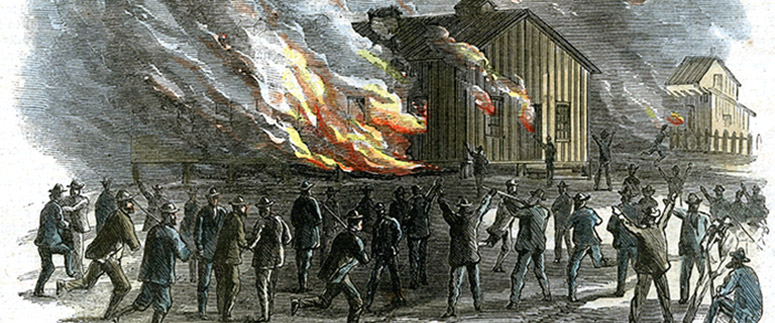THE NATION CLASSROOM
American History as It Happened
RACE RELATIONS and CIVIL RIGHTS
MODULE ONE: 1865–1877
SAMPLE ANSWERS
PRACTICE ACTIVITY ONE
Analyze: Carefully read Document Five, “The 15th Amendment to the US Constitution,” and Document Six, the Nation article “The End at Last.” Review the article’s discussion of the two bills before Congress and answer the following four questions:
1. What is significant about the dates of the amendment and the article? Why were the two bills introduced? The article was published a few months after the 15th Amendment had been ratified and became part of the US Constitution. The first bill discussed in the article was a follow-up to the amendment, introduced to ensure that black people would not be prevented from exercising the right to vote granted by the amendment. The second bill, introduced by Senator Sumner, was intended to give black people equal rights to be admitted to public venues, including hotels and theaters.
2. What does the author feel is necessary to protect the voting rights of black people? Why does he feel it’s necessary? The author stresses the importance of imposing penalties for denying African Americans their right to vote. The passage notes that simply passing laws (even constitutional amendments) that guarantee the right to vote is not sufficient, because “There are so many ways of cheating people out of their votes…unless the various modes of defrauding them [a]re enumerated, punishment prescribed for each, and the exact mode of getting it inflicted pointed out”.
3. What is meant by the article’s title, “The End at Last”? Did the title prove prophetic or inaccurate? Include text evidence in your response. The title refers to the end of the Reconstruction process. The author says, “There are two bills now before Congress which, if the Reconstruction process be capable of completion, ought to complete it.” The article goes on to say that if these two pieces of legislation were enacted, “there will be nothing left undone that legislation can do to improve the condition of the colored man.”
The title is ultimately inaccurate: Although Reconstruction did end (nearly seven years after the date of this article), it was never truly completed, because African Americans living in the South did not achieve full civil rights by its close in 1877, or in the many decades that followed. However, the article acknowledges—twice—the possibility that the mission will never be accomplished, noting that legislating change is different from achieving change. First, in talking about the completion of Reconstruction, the author adds a note of caution by saying “if the Reconstruction process be capable of completion” (emphasis added). Second, the article modifies the phrase “there will be nothing left undone” with the words “that legislation can do”—recognizing that legislation can only do so much.
4. What can you conclude from this excerpt about the US Constitution in regard to the Reconstruction process? The US Constitution and its amendments were important tools in the Reconstruction process. However, neither the Constitution itself nor the amendments passed by Congress and ratified by the states could guarantee that the desired change would take place.

